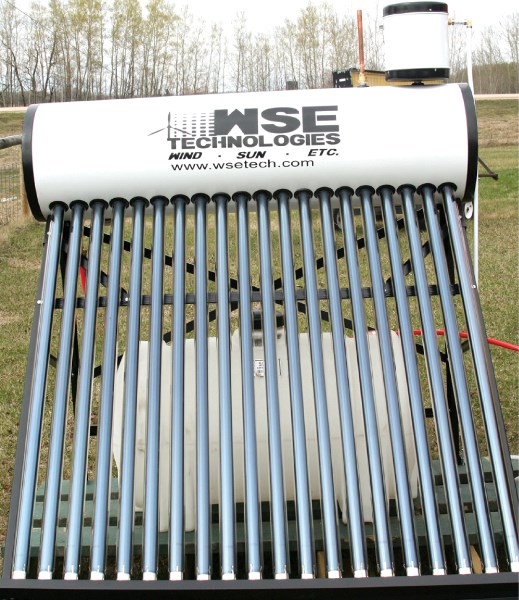Muriel Creek Cattle is not your average farm. And farm operator Greg Sawchuk's newest venture, Muriel Creek Sunshine, promises to be equally as enterprising.
Around 30 people came to a demonstration day at Sawchuk's farm on May 2.
“It's something I'm going to offer my clients for
sure,” says Rolland Gratton, who owns Rolton Construction. Gratton attended the solar demonstration to learn about solar energy.
“I thought it was quite interesting,” he says, adding that he thought it could supplement his geothermal heating system at home.
Muriel Creek Sunshine sells solar panels as well as designs systems for homes or businesses interested in converting. Since starting his business, Sawchuk has provided assessments for an oilfield services company, building companies, and homeowners.
He says it's an investment that pays for itself in time. A retrofit system can pay for itself in seven years, but he says a new system can pay for itself in as little as three or four.
Panels are guaranteed for 30 years. “That's a long time with free energy,” Sawchuk notes.
Sawchuk sells WSE Technologies solar energy products made in Saskatoon.
He says farms and big shops can be ideal locations for solar energy because they have enough space to mount the panels.
“You know when it's being tested in Saskatoon that it's good for our climate because it's virtually the same.”
“It is something that's going to take off,” says Sawchuk.
He says unlike most products that are bought new, solar energy is an investment that pays off in time instead of depreciating.
One way to increase a home's energy efficiency is with passive solar house design. Sawchuk provides an assessment for one's house free of charge if someone is thinking of going solar. Passive solar house design involves designing a house to take advantage of the power of the sun naturally.
“The most important thing we can do in efficiency of a house is how we place it in the first place,” Sawchuk says. The technique can be as simple as including as many south-facing windows as possible, but also considers the effect of overhangs letting in the sun during summer and winter months.
He explains that 95 per cent of his home's domestic hot water comes from solar heat in the summer. In winter, solar energy provides around 60 per cent.
“The heat that is produced is quite high. We've seen as high as 165 degrees Fahrenheit.”
Sawchuk is also constructing a home on his property and insulating it with Rite-way foam insulation. He says the foam-insulated house will be “super-insulated.” An important part of solar energy is finding new ways to conserve it.
Before starting his farming and solar energy operations, Sawchuk was stationed at 4 Wing as a flight engineer. He says as a farmer operating with solar energy, he's in a win-win situation. When it's sunny his solar is working to save him money on heat and power, while if it's raining, the grass is growing for the animals.
Muriel Creek Cattle operates a hobby farm visited by school tours group parties who come to see miniature donkeys, miniature sheep, miniature horses, rabbits, lamas, goats, and alpacas. The farm also direct markets meat from cattle and chickens as well as eggs.



